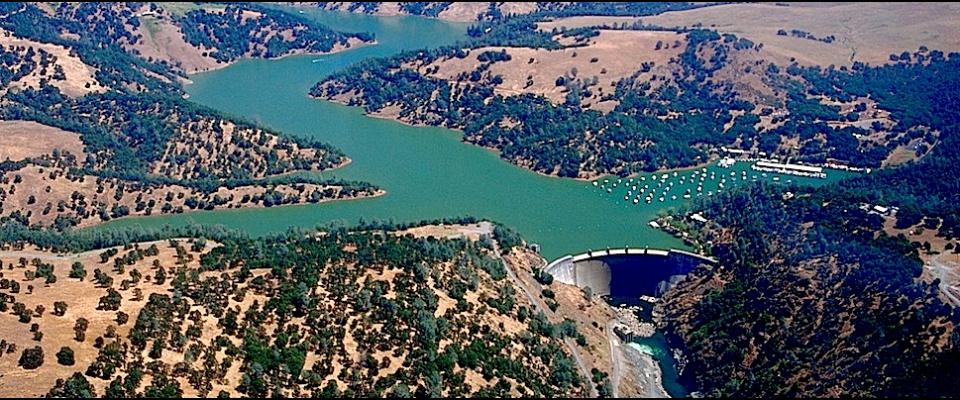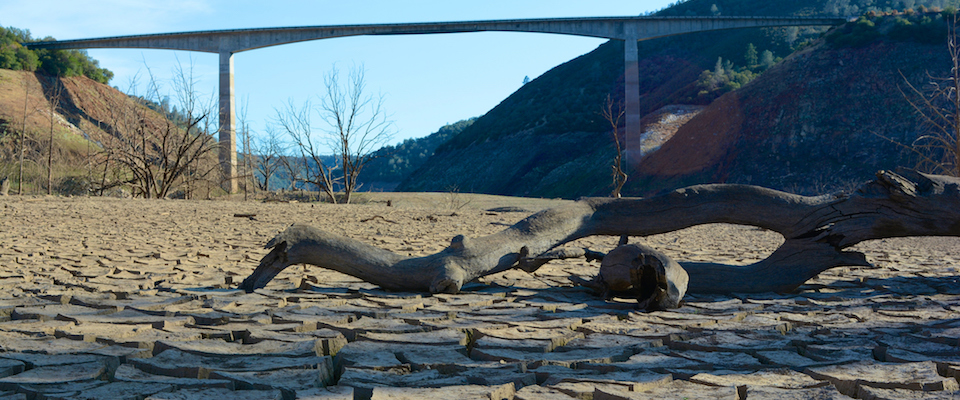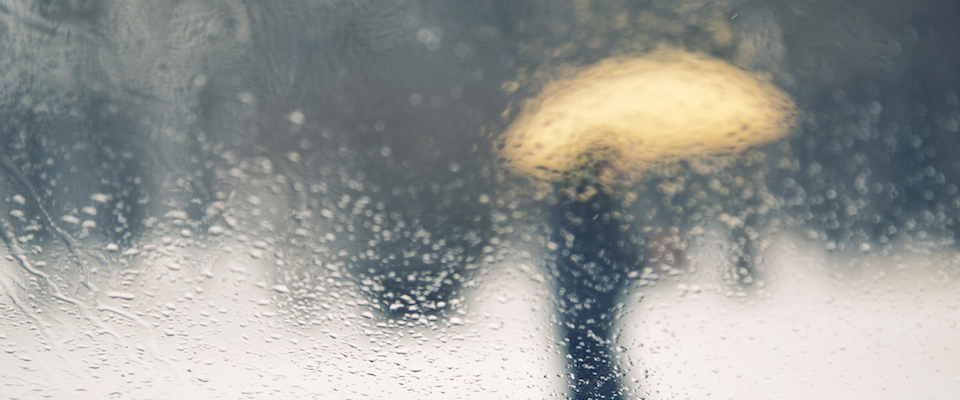As the drought drags on and reservoir levels keep dropping, our politicians predictably are clamoring for new dams. But there may be a better and cheaper way to squeeze more water out of California’s desiccated watersheds: Clean out the gunk behind existing reservoirs. That’s because dams collect sediment from eroding watersheds along with water. Our reservoirs rapidly are filling up with silt, sand and rocks—and the more sediment, the less room there is to collect life-sustaining water.
“So far, there’s about 1.7 million acre feet of sediment behind California’s dams,” observes U.S. Geological Survey geomorphologist J. Toby Minear, “and more is deposited every year.”
Make no mistake: 1.7 million acre feet is a lot of mud, no matter how you shovel it. A single acre foot is equivalent to a foot of a given substance covering an acre. By another, more familiar metric, that amounts to 325,852 gallons.
The problem is worse for smaller reservoirs in “highly erodible” watersheds than for larger reservoirs with stable, rocky slopes. In other words, it’s more of a worry for the small projects in the coastal range than the big reservoirs in the Sierra foothills. There are many exceptions to this rule, however; some reservoirs east of the Central Valley also are clogging up.
“Really, it’s an issue for all of the state’s 1,400 reservoirs,” says UC Berkeley professor of Landscape Architecture and Environmental Planning Matt Kondolf. “And for some reservoirs it’s critical.”
Kondolf cites four dams with reservoirs that are literally topped out with sediment: Rindge Dam on Malibu Creek, Matilija Dam on the Ventura River, San Clemente Dam on the Carmel River, and Searsville Dam on San Francisquito Creek on the San Francisco Peninsula. All these “reservoirs” would be better put to cultivating potatoes than storing water.
“On top of that there are maybe 200 reservoirs that are from a third to half full (of sediment),” he adds. “Englebright Dam on the Yuba River is about a third full with more than 22 million cubic yards of sediment.* Black Butte reservoir (west of Orland) is also filling up rapidly, with close to a third of its capacity taken by sediment.”
Even California’s biggest reservoirs are accumulating massive gobs of sediment, but their vast capacity means water storage won’t be impaired for decades to come.
“Perhaps 10 percent of Shasta’s capacity is now taken up by sediment,” Kondolf said. “That amounts to 400 thousand acre feet for that reservoir alone. But because Shasta is so huge (with a total capacity of 4,552,000 acre feet), the problem isn’t as acute. Yet.”
Kondolf and Minear, who holds a doctorate from UC Berkeley, have been aware of the problem for some time. The duo wrote an article on sedimentation rates in California’s reservoirs for the journal Water Resources Research in 2009. It was well received by academic peers, and it also percolated among policy makers and their staffers. More to the point, it drove a bill recently approved by the California state Senate that, if passed by the Assembly and signed into law, will fund new reservoir sedimentation studies.
“It’s a start, at least, and a necessary one,” says Kondolf. “We put more effort into studying sedimentation rates in the 1940s than we do now. In fact, all funding for that research pretty much disappeared in the 1970s.”
Minear acknowledges that removing sediment won’t be easy or cheap. There are three basic ways to go about it: dredging; drawing down reservoirs and removing the silt, sand, gravel and cobbles by heavy machinery; or flushing the stuff out through the dam face. All three methods have their advantages and drawbacks. Probably the most effective approach is flushing, but not all dams are designed to accommodate such procedures.

“Retrofitting the dams where it isn’t currently possible could be a reasonable option,” Kondolf says. “We hope to determine that with additional research.”
Then there’s the problem of what to do with the stuff. Flushing it could result in temporary downstream impacts, and those will have to be evaluated for each watershed. But in many cases, the sediment may prove a valuable resource. In Southern California, says Minear, much of the sediment is sand; this could be used to replenish SoCal beaches, where sand erosion is a perennial problem. Kondolf observes that cobbles and larger gravels would be apt for restoring salmon spawning habitat. Salmon must lay their eggs in reaches covered with clean, small rocks for successful reproduction, but dams have reduced the supplies of such materials. In free-flowing rivers, spawning beds are replenished with gravel on an on-going basis by downstream flows; but dams trap gravels and cobbles, and salmon redds downstream of the reservoirs silt up.
Not all sediments, however, may be good candidates for environmental restoration projects.
“Mercury is a concern for some Sierra sediments,” Kondolf says. “Huge quantities of mercury were used for ore processing during the Gold Rush, and it’s still an issue for some areas.”
Clearly, none of the options for removing and redeploying sediments will be cheap, as Kondolf and Minear acknowledge, but they’re likely less expensive than building the new dams now proposed for California. Minear notes virtually all the state’s good dam sites already have been exploited.
Most of the dams they’re left with now are marginal sites, he says.
The highly controversial dam proposed for Temperance Flat on the San Joaquin Rive would hold only an estimated 460,000 acre feet* and would soak taxpayers for billions of dollars. By contrast, removing sediments from existing reservoirs would yield the water storage capacity equivalent to four Temperance Flat-size reservoirs, avoid years of lawsuits, political bluster and additional impacts to the San Joaquin River system—and cost less.
In short, says Kondolf, “We’d just get a lot more bang for our buck.”
* This information reflects a correction from the original article.




















